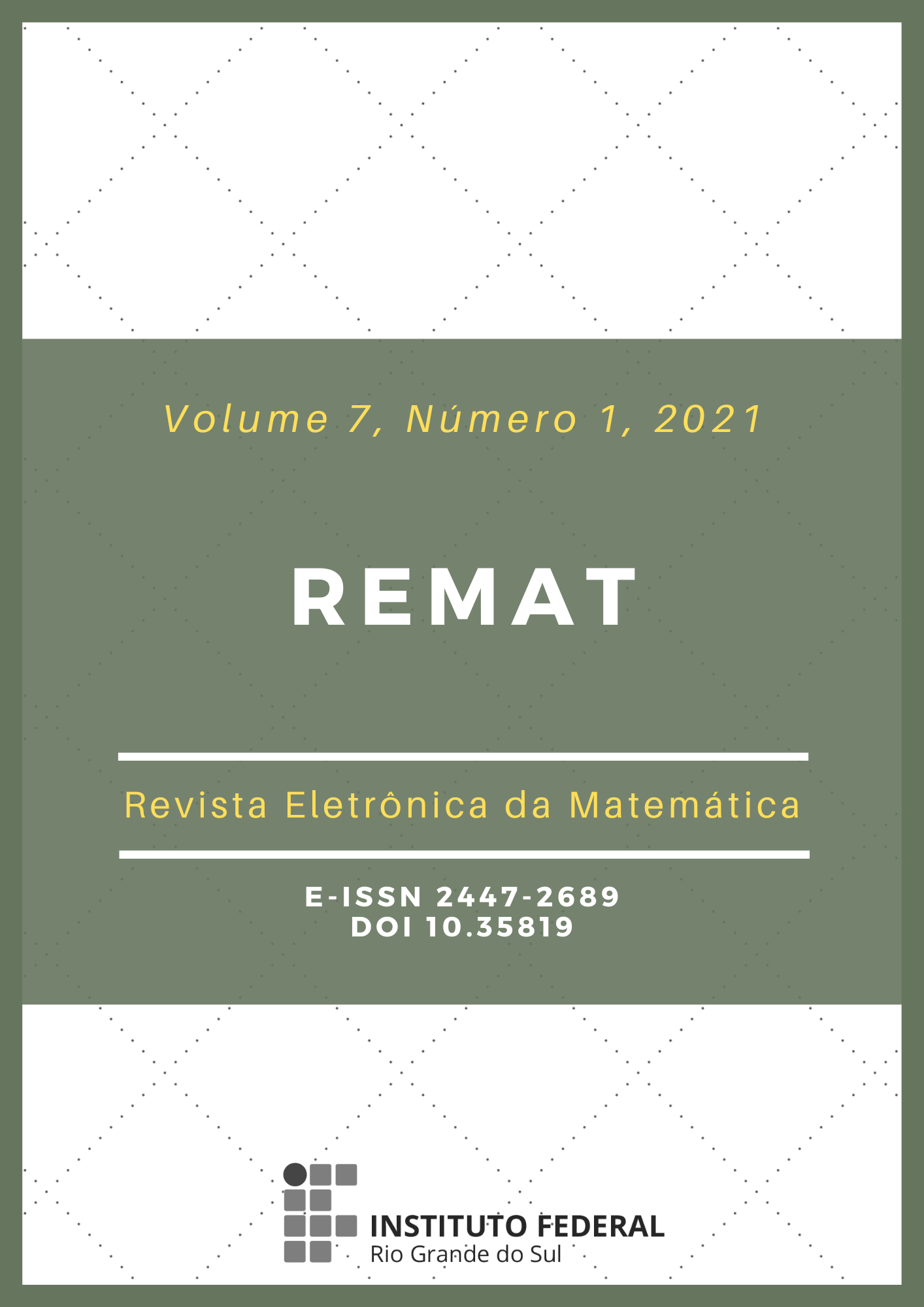Deep Neural Network-based Decoder for Short Linear Block Codes Transmitted via Binary Symmetric Channel
DOI:
https://doi.org/10.35819/remat2021v7i1id4389Keywords:
Neural Network-Based Decoder, Binary Symmetric Channel, Error Correcting CodesAbstract
Short-length codes have been the subject of recent studies mainly due to the need for specific communication requirements expressed by emerging technologies. However, for the most promising code class (BCH), decoding is complex when using traditional decoders. In this context, projects that use neural networks for this purpose appear as interesting alternatives. That said, in this article, the decoder project proposed in the literature that applies the neural network to estimate the error pattern considering the received vector syndrome extends to the BCH codes of length n less than or equal to 31. In addition, a new decoder is introduced, one that iteratively estimates the most reliable positions to be the erroneous bits of the error pattern previously predicted by a neural network. The results presented show that, for all the analyzed codes, the new decoder reaches the maximum theoretical performances.
Downloads
References
BISHOP, C. M. Pattern Recognition and Machine Learning. Springer, 2006.
BOSE, R. C.; RAY-CHAUDHURI, D. K. Further results on error correcting binary group codes. Information and Control, v. 3, n. 3, p. 279-290, set. 1960a. DOI: http://doi.org/10.1016/S0019-9958(60)90870-6.
BOSE, R. C.; RAY-CHAUDHURI, D. K. On a class of error correcting binary group codes. Information and Control, v. 3, n. 1, p. 68-79, mar. 1960b. DOI: http://doi.org/10.1016/S0019-9958(60)90287-4.
DURISI, G.; KOCH, T.; POPOVSKI, P. Toward massive, ultrareliable, and low-latency wireless communication with short packets. Proceedings of the IEEE, v. 104, n. 9, p. 1711-1726, set. 2016. DOI: http://doi.org/10.1109/JPROC.2016.2537298.
GOODFELLOW, I.; BENGIO, Y.; COURVILLE, A. Deep Learning. [S.I.]: MIT Press, 2016. Disponível em: http://www.deeplearningbook.org. Acesso em: 14 maio 2020.
GRUBER, T.; CAMMERER, S.; HOYDIS, J.; BRINK, S. On deep learning-based channel decoding. In: ANNUAL CONFERENCE ON INFORMATION SCIENCES AND SYSTEMS, 2017, Baltimore. Proceedings ..., s.L.: IEEE, 2017. p. 1-6. DOI: http://doi.org/10.1109/CISS.2017.7926071.
HAYKIN, S. Digital Communication Systems. Hoboken, NJ: John Wiley & Son, Inc., 2014.
HOCQUENGHEM, A. Codes correcteurs d'erreus. Chiffres, v. 2, p. 147-156, 1959. Disponível em: http://kom.aau.dk/~heb/kurser/NOTER/KOFA02.PDF. Acesso em: 22 mar. 2020.
HORNIK, K.; STINCHCOMBE, M.; WHITE, H. Multilayer feedforward networks are universal approximators. Neural Networks, v. 2, n. 5, p. 359-366, 1989. DOI: https://doi.org/10.1016/0893-6080(89)90020-8.
IOFFE, S.; SZEGEDY, C. Batch normalization: accelerating deep network training by reducing internal covariate shift. CoRR, abs/1502.03167, 2015. Disponível em: http://arxiv.org/abs/1502.03167. Acesso em: 28 abr. 2020.
KAMASSURY, J. K. S.; SILVA, V. F. O. Rápido reconhecimento de modulações analógicas e digitais via redes residuais profundas. In: SIMPÓSIO BRASILEIRO DE ENGENHARIA FÍSICA, 14, Ponta Grossa, 2020. Anais... Ponta Grossa: Atena Editora, 2020. cap. 9, p. 83-97. DOI: http://doi.org/10.22533/at.ed.1572002039.
KAMASSURY, J. K. S.; TÔRRES, I. F.; DUARTE, W. G. Decodificação de máxima verossimilhança para códigos de bloco lineares: probabilidades de erro do código de repetição e do código de Hamming. REMAT: Revista Eletrônica da Matemática, v. 5, n. 2, p. 177-191, 1 jul. 2019. DOI: https://doi.org/10.35819/remat2019v5i2id3371.
KINGMA, D. P.; BA, J. Adam: a method for stochastic optimization. CoRR, abs/1412.6980, 2014. Disponível em: http://arxiv.org/abs/1412.6980. Acesso em: 28 abr. 2020.
LIN, S.; COSTELLO, D. Error control coding: Fundamentals and Applications. 2. ed. Upper Saddle River, NJ: Prentice-Hall, 2004.
O'SHEA, T.; HOYDIS, J. An introduction to deep learning for the physical layer. IEEE Transactions on Cognitive Communications and Networking, v. 3, n. 4, p. 563-575, dez. 2017. DOI: https://doi.org/10.1109/TCCN.2017.2758370.
PROAKIS, J. G.; SALEHI, M. Digital Communication. 5. ed. New York: McGraw-Hill, 2007.
SHIRVANIMOGHADDAM, M.; MOHAMMADI, M. S.; ABBAS, R.; MINJA, A.; YUE, C.; MATUZ, B.; HAN, G.; LIN, Z.; LIN, W.; LI, Y.; JONHSON, S.; VUCETIC, B. Short block-length codes for ultra-reliable low latency communications. IEEE Communications Magazine, v. 57, n. 2, p. 130-137, fev. 2019. DOI: http://doi.org/10.1109/MCOM.2018.1800181.
SMITH, L. N. Cyclical learning rates for training neural networks. In: IEEE WINTER CONFERENCE ON APPLICATIONS OF COMPUTER VISION, 2017, Santa Rosa. Proceedings..., s.L.: IEEE, 2017. p. 464-472. DOI: http://doi.org/10.1109/WACV.2017.58.
TALLINI, L. G.; CULL, P. Neural nets for decoding error-correcting codes. In: IEEE TECHNICAL APPLICATIONS CONFERENCE AND WORKSHOPS. NORTHCON/95. CONFERENCE RECORD, 1995, Portland. Proceedings..., s.L.: IEEE, 2002. p. 89-94. DOI: http://doi.org/10.1109/NORTHC.1995.485019.
WANG, X.-A; WICKER, S. B. An artificial neural net Viterbi decoder. IEEE Transactions on Communications, v. 44, n. 2, p. 165-171, 1996. DOI: http://doi.org/10.1109/26.486609.
WHITE, H. Connectionist nonparametric regression: Multilayer feedforward networks can learn arbitrary mappings. Neural Networks, v. 3, n. 5, p. 535-549, 1990. DOI: https://doi.org/10.1016/0893-6080(90)90004-5.
Downloads
Published
Issue
Section
License
Copyright (c) 2021 REMAT: Revista Eletrônica da Matemática

This work is licensed under a Creative Commons Attribution 4.0 International License.
REMAT retains the copyright of published articles, having the right to first publication of the work, mention of first publication in the journal in other published media and distribution of parts or of the work as a whole in order to promote the magazine.
This is an open access journal, which means that all content is available free of charge, at no cost to the user or his institution. Users are permitted to read, download, copy, distribute, print, search or link the full texts of the articles, or use them for any other legal purpose, without requesting prior permission from the magazine or the author. This statement is in accordance with the BOAI definition of open access.













 https://orcid.org/0000-0002-0893-7426
https://orcid.org/0000-0002-0893-7426


















